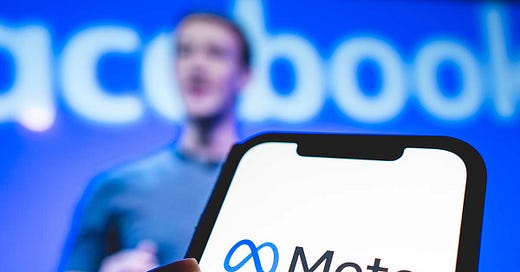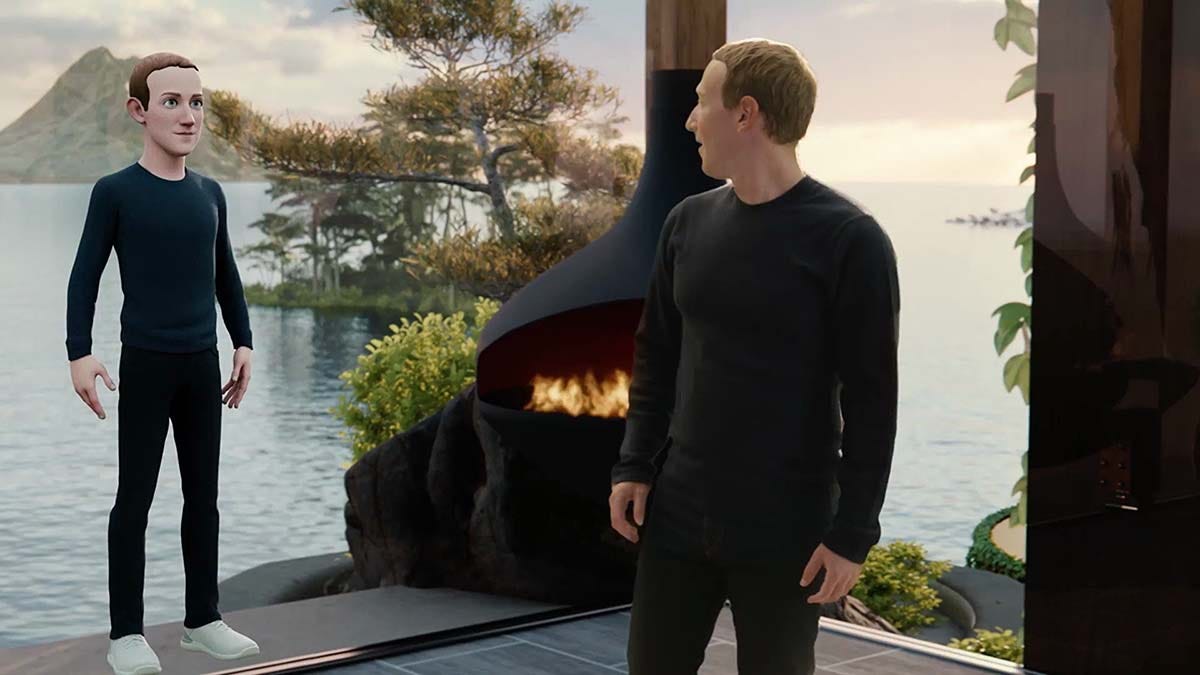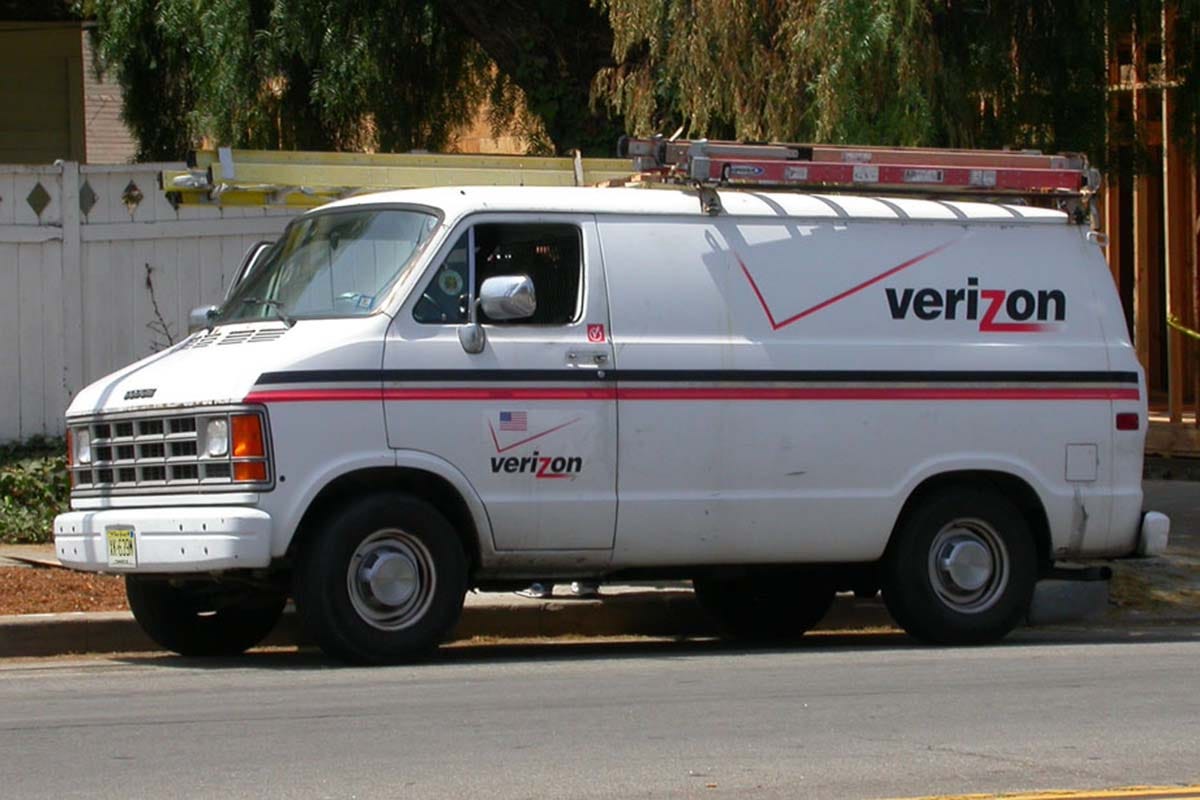Meta is for Employees
Good morning,
I would like to thank you for your continued patience and support during my parental leave.
I’m not quite ready to return to regular Marketing BS programming, but I have two pieces of content to highlight:
In case you missed it, here is last week’s first-in-a-while Marketing BS briefing.
For today’s essay, I couldn’t help but think about how Facebook’s rebrand fits within my theory of ‘marketing to employees.’
—Edward
Enter the Metaverse
Unless you spent last week living under a rock, you’ve already heard the biggest branding news of the decade: Facebook (the company, not the app) is rebranding itself as “Meta.”
I recommend reading Mark Zuckerberg’s (brief) “founder’s letter” and the (even briefer) general announcement about the name change. Here’s a link to the keynote presentation that not only featured interviews with Zuckerberg and other senior leaders, but also demonstrated some of the company’s in-development tools for virtual reality, augmented reality, and more.
In today’s essay, I’m not very interested in talking about the pros/cons of rebranding your company. Instead, I want to share my perspectives about a bigger idea: by doubling down on the future of the metaverse, Zuckerberg has repositioned his company as one that’s on the front lines of innovation.
Meta’s massive R&D investment in emerging technologies will help the company recruit and retain many of the most curious, creative, and ambitious people in the tech industry.
What’s in a name? (The metaverse, of course)
In addition to Meta’s own public announcements, Zuckerberg also sat down for two interviews: one with Casey Newton at The Verge, and the other with Ben Thompson at Stratechery. I highly recommend reading both interviews; they offer far more insights than the official announcements.
(Note that both interviews were granted to members of the “independent” media. Newton usually writes for his own newsletter (The Platformer), and Thompson is the founder and sole writer of Stratechery. Without question, Facebook has endured a rough relationship with the mainstream media since at least 2016, when many pundits blamed the social media platform for Donald Trump’s election.)
I want to highlight a specific section from Zuckerberg’s interview with Ben Thompson:
Ben: Who is the target for [the video that reveals Meta’s vision for VR, AR, etc.]? Given that you’re painting a picture of something that is several years in the future, I could definitely see critics saying it’s just a bunch of vaporware. I get your point is you said you’re spending all of this money to build something, you want to show what it is you’re building, but who is it you want to show it to? Is it employees, is it recruits, is it investors, is it developers? I suspect you’re going to say the last one, but there doesn’t seem to be a huge number of opportunities outside of games quite yet for this sort of vision that you painted, which is many years down the road.
In response, Zuckerberg basically ignores the question. To his credit, though, he later returns to the idea and offers his perspective:
Mark: You asked earlier, who is the film for? I don’t know that it was specifically for any one of those audiences. I think it’s just to put our stake intellectually and philosophically around what we’re trying to build out there, and I think that there are elements of it for all of the audiences that you said. Partially it’s to put our stake in the ground around how we think this stuff should work for developers, some of it is certainly for employees or recruits. I want to establish our company as, if you want to work on this stuff, I think we’re going to be the most exciting place to go do that. [Emphasis mine]
I think that Zuckerberg is telling the truth — at least as he sees it. The presentation was not intended for any one particular group. Instead, he really was trying to plant his stake in the ground and let everyone know what he wants to do with the future of his company.
Some analysts have equated the Facebook-to-Meta rebrand to Google’s 2015 renaming of their parent company. But whereas Alphabet was structured as a holding company that could pull the economic profits (or mostly losses) from the founders’ various side projects away from Google’s core business, the change at Facebook is more fundamental.
To be clear, Facebook’s new name and structure does separate the economics of its emerging VR and AR projects from its core social media platform. More broadly, though, the new name reflects just how much Zuckerberg is willing to bet on the future of “the metaverse.” Facebook’s 2020 annual operating expenses were roughly $70 billion; last Thursday, Zuckerberg announced that the company’s investment in the metaverse would begin at $10 billion per year — and would increase going forward. To put the size of that investment into perspective, Apple’s entire R&D spend for 2020 was $18.75 billion. And although Apple directed some of its R&D resources to experimental projects like cars and VR, most of those dollars were used to develop the next iterations of the iPhone, MacBook, and other existing products.
Meta has committed to investing $10 billion per year on a product category that DOES NOT YET EXIST! We shouldn’t understate the boldness of Zuckerberg’s direction — this is an absurdly large bet for any company, in any industry.
Technology theorists have offered many different visions of what the metaverse might look like — some of which borrow from the dreams of 20th-century science fiction novelists.
The truth, of course, is that no one really knows.
Even the best prognosticators are wrong a lot of the time. Perhaps the metaverse will become the most important platform of our lifetime. Or maybe the concept will end up being totally irrelevant to our lives. I expect the metaverse will be part of an iterative path to some type of technological application that no one is even talking about today.
Think back to the 1990s and the dawn of the internet. Some visionaries believed that users would be passive, accessing the internet through their televisions. Even after Google launched, many people — including the company’s own CEO! — thought that “portals” would play a larger role in monetizing the internet than search. And few people foresaw the future potential of social networking and cloud computing.
All in all, even if someone was correct with their GENERAL prediction that “the metaverse will be the most influential tech innovation in history,” then there’s still a good chance that Zuckerberg’s SPECIFIC investments will be spent on the wrong elements.
But — wasting billions of dollars on wrongly directed R&D might still end up reaping rewards for Meta.
Verizon’s Big Bet
To understand how Meta’s massive investment might pay off — even if the metaverse falls flat (or heads in a different direction than Zuckerberg imagines) — let’s look at another company that made a very large bet on the future: Verizon.
Back in 2005, telecom companies were still focused on their “fixed line” (aka “land line”) products. The mainstream adoption of mobile phones was clearly on the horizon, which threatened the future viability of telecom giants like Verizon, AT&T, CenturyLink, etc.
Plus, the growing popularity of at-home internet connectivity further endangered the telecom companies. With the existing fixed line infrastructure, the best service that telecom companies could deliver was DSL (Digital Subscriber Line). Although DSL offered a better customer experience than surfing the internet over a telephone line, DSL was still much, much slower than the internet connections offered by the cable television companies.
Comcast (and Cox, Charter, etc.) promoted bundles that packaged cable television AND internet service for one price; plus, for a very small add-on fee, these companies offered customers a fixed line phone number (using VOIP — Voice of Internet Protocol).
During this era, if you wanted to work in the telecommunications industry and you wanted to WIN, the choice was clear — work for a cable company, not a telecom one.
In the mid-2000s, I worked on a variety of consulting projects for telecom operators - including Verizon. One project considered how Verizon should make future investments in infrastructure. Everyone agreed on the importance of building a better internet product, and there were two primary options to consider:
Fiber-to-the-residence (FTTR). Verizon could run fiber optic cables directly to each house. This option would provide blazing fast internet. If customers clicked on a webpage, the content would appear instantly — this would be a type of internet experience that no one had ever seen before. There was one major problem: FTTR was extremely expensive. If a house did not sign up for Verizon’s internet services, then the cost of running fiber all the way to their door would have been wasted. Plus, even if customers DID sign up (and pay a premium price), it would still take Verizon years to pay back the cost of building their fiber infrastructure.
Fiber-to-the-node (FTTN). Verizon could build a network that ran fiber optic cables to central nodes (like a city block); the company would then use cheaper DSL cables to connect the nodes to each individual house. This option would provide fast internet — not close to the speed of FTTR, but definitely comparable to the services offered by the cable TV companies. And, obviously, the cost of installing this type of network would be much lower than running fiber optic cable to every house.
After building giant Excel spreadsheets, the answer on what Verizon should do was obvious: go with the fiber-to-the-node option. From a “net present value” basis, there were no assumptions you could make that could justify the costs of FTTR. Also, the FTTN strategy could be rolled out MUCH faster — Verizon could immediately compete with the cable companies over a much larger geography.
The decision was clear and our consulting firm recommended that Verizon should pursue FTTN.
Verizon ignored the recommendation.
Instead, the company decided to invest everything they in FTTR — despite the negative NPV. In September 2005, Verizon launched FiOS (short for Fiber Optic Service). The team’s projections about the economics of FTTR were proven correct; FiOS was a money-losing disaster. But the analysis missed the secondary effect of FiOS: the product was cool. People were awed by product demonstrations that showed off FiOS’ incredible speeds.
In regions where FiOS directly competed with Comcast’s cable services, Verizon increased their market share (although Verizon continued to incur huge losses as they gained that share).
By making a big bet on cutting-edge technology, Verizon gained new customers. And, even more relevant for today’s essay, Verizon gained people’s respect.
All of a sudden, Verizon had managed to flip the narrative. No longer seen as the antiquated telecom operator, Verizon was the company with a bold vision for tech innovation. Let’s return to the question of where smart and ambitious people might want to work; the FiOS project suggested that Verizon — and not the cable companies — might be the best choice.
Most people who joined Verizon after the FiOS rollout did not actually work on fiber optic networks. But those employees joined, at least indirectly, because of the way that FiOS enhanced Verizon’s reputation as a forward-thinking company.
In other words, as a product that delivered internet services, FiOS lost money. BUT, as a product that delivered high-quality employees, FiOS was a massive success.
Meta is for Employees
For most of the last 15 years, ambitious and talented people have sought jobs at Facebook. In addition to paying high salaries and providing the “cool” Silicon Valley benefits, Facebook offered an opportunity to work alongside other talented employees. For intrinsically motivated people who love to make things happen, there’s no more appealing trait for a prospective tech employer than a reputation for aggressively developing new products. Even while Facebook endured beatings in the popular press, the company still managed to recruit and retain top talent from the tech industry.
A recently leaked email memo, though, describes a hiring crisis at Facebook. Here are a couple of key sections from the message, which was circulated some time in 2021:
All of our tech sites are under pressure right now since we maxed our recruiting feasibility. All of you are now starting to experience that major imbalance between supply and demand — and it doesn't feel good. We are experiencing growth pains.
When we miss our hiring goals, we don't end up building all the things we planned to build, or they move a lot slower. Missing our engineering hiring goals was a big problem, and Mark made it clear he didn't want a repeat performance in 2020. [Emphasis mine]
What caused the hiring crisis at Facebook? Probably some combination of COVID-related shifts in employment, increased competition for talent from VC-funded startups, and the public’s increasingly negative perceptions of the company.
But I wonder if there’s another reason that working for Facebook has lost some of its luster: the company is no longer seen — at least by top talent — as a cutting-edge innovator.
Facebook isn’t the only tech giant facing this issue. Think about the types of inspirational missions that drove the tech giants 15 years ago:
You joined Google to index all of the world’s information.
You joined Amazon to build a store that sells everything.
You joined Apple to invent new categories of consumer products.
And you joined Facebook to connect every human on earth.
Today, you could argue that all these companies are entering, as Jeff Bezos calls it, “Day Two.”
By rebranding Facebook as Meta, and by proclaiming an audacious vision for the metaverse, Mark Zuckerberg has declared that his company — unlike the other tech giants — is returning to Day One.
With Meta’s unprecedented R&D investment in new technologies, Zuckerberg is signalling his intention to make the company the best place to work for the brightest minds in the world. For ambitious people who want to build the future, working on the metaverse seems like a particularly attractive option.
In Zuckerburg’s best-case scenario, the metaverse becomes the next internet — with Meta at the center. But even the back-up scenario could provide — much like Verizon’s investment in FiOS — a dynamic way to recruit and retain the best employees.
This is the biggest and boldest “Marketing to Employees” bet ever made. Even if Mark himself isn’t entirely sure who he is talking to.
Keep it simple,
Edward
Edward Nevraumont is a Senior Advisor with Warburg Pincus. The former CMO of General Assembly and A Place for Mom, Edward previously worked at Expedia and McKinsey & Company. For more information, including details about his latest book, check out Marketing BS.









